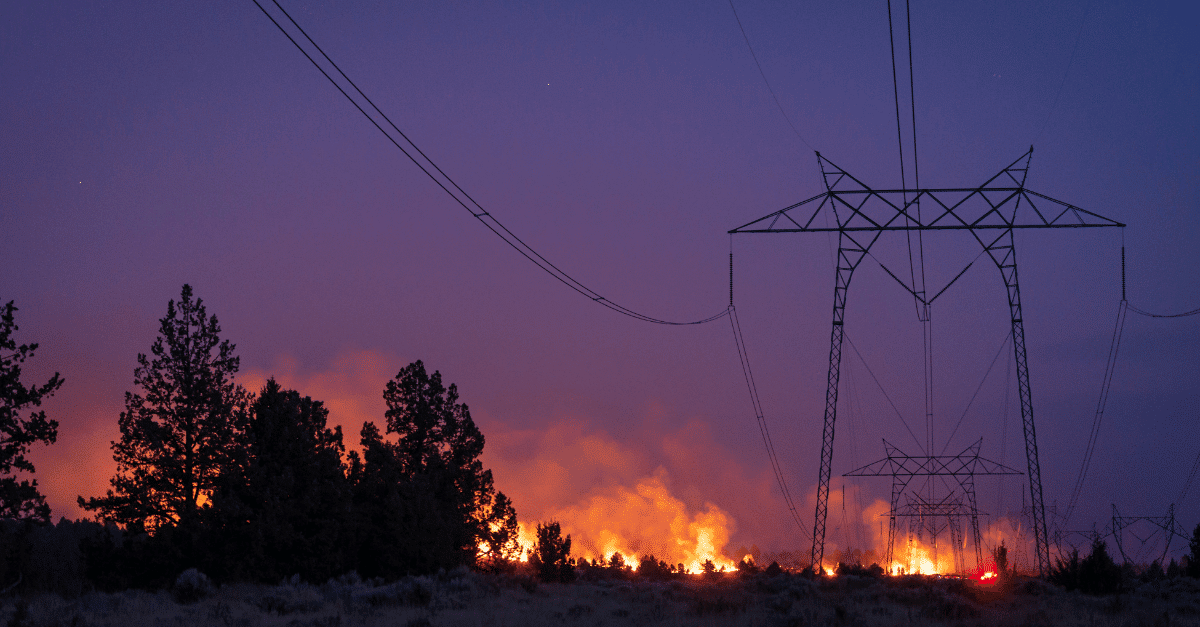It’s difficult to quantify the exact amount of CO2 emissions caused by wildfires, as it can vary greatly from year to year and location to location, and depend on the size and duration of the fires. However, it is estimated that wildfires can contribute to a significant portion of total global CO2 emissions in a given year. Some sources have estimated that the total CO2 emissions from wildfires can range from 5-10% of total global CO2 emissions in some years, especially in regions where fire risk is high due to factors such as drought, land-use changes, and human activities.
When a fire burns, it releases carbon stored in the biomass of the plants and trees being burned, leading to an increase in atmospheric CO2 levels. In addition to CO2, wildfires also emit other greenhouse gasses and particles that can contribute to air pollution and climate change.
It’s also important to note that while natural causes such as lightning can ignite fires, human activities such as deforestation, land-use changes, and climate change, which can exacerbate fire risk, also play a significant role in the frequency and intensity of wildfires.
Electrical faults often ignite wildfires
Electrical faults in power grids can be a significant cause of wildfires, especially in areas with dry vegetation and high winds. According to some estimates, electrical equipment failures, including faults in power lines and transformers, account for about 10% of all human-caused wildfires in the United States.
When electrical equipment fails, it can create sparks that can ignite dry vegetation or other flammable materials near the equipment, leading to the start of a wildfire. The risk of wildfires caused by electrical equipment failures can be reduced through maintenance and upgrades to power infrastructure, as well as by reducing the amount of vegetation near power lines and other electrical equipment.
It’s important to note that the extent to which electrical faults in power grids contribute to wildfires can vary greatly depending on the location and the specific cause of the electrical fault, as well as other factors such as the weather conditions and the availability of fuel for the fire to spread. Another point to consider is that the causes of wildfires can vary greatly depending on the location, time of year, and other environmental conditions, and that a combination of factors often contributes to the occurrence of a wildfire.
How to mitigate the risk of wildfires from electrical faults in power grids?
Utilities can use Safegrid’s Intelligent Grid System (IGS) to mitigate the risk of wildfires caused by electrical faults in power grids. Safegrid’s IGS is a real-time monitoring and management system that helps utilities to quickly identify and respond to electrical faults, reducing the risk of fires caused by equipment failures.
Here are some of the ways in which Safegrid’s IGS helps utilities to mitigate the risk of wildfires:
- Real-time monitoring
Safegrid’s IGS uses sensors to continuously monitor the electrical grid and detect potential faults in real-time. - Early warning system
The system generates alerts and notifications in the event of a potential electrical fault, allowing utilities to respond quickly and take preventative action. - Predictive maintenance
By analyzing data on the performance and condition of electrical equipment, Safegrid’s IGS can predict when equipment is likely to fail and prioritize maintenance and upgrades to reduce the risk of fires. Safegrid’s IGS is also able to warn grid owners of vegetation near the line before it actually touches it. - Improved response times
Safegrid’s IGS provides utilities with the tools and information they need to respond quickly and effectively to electrical faults, reducing the risk of fires and other equipment failures.
Overall, Safegrid’s IGS helps utilities to proactively manage the electrical grid and reduce the risk of wildfires, ensuring a safer and more reliable power supply for their customers. By improving the efficiency and reliability of the electrical grid and reducing the risk of wildfires, Safegrid’s IGS has the potential to reduce CO2 emissions and help mitigate the impacts of climate change.

